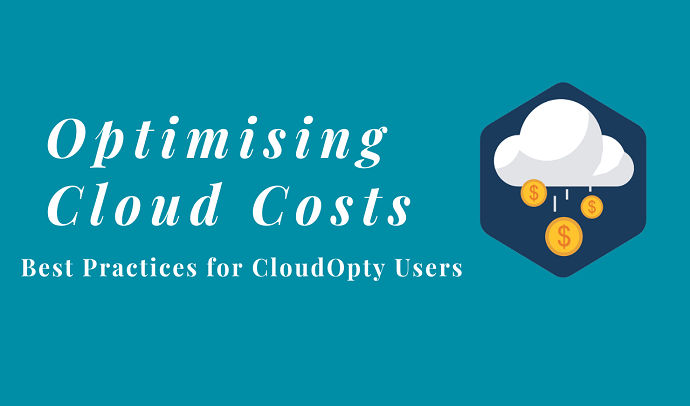Download PDF
Introduction
CloudOpty can be a powerful tool for optimising your cloud costs, but it is crucial to know the best practices to leverage its features. Here are some best practices to help you optimise your cloud spending:

1. Regularly Monitor Resource Usage:
- Utilise CloudOpty’s monitoring features to keep track of resource utilization.
- Identify underutilised or idle resources and consider downsizing or terminating them.
2. Implement Auto-Scaling:
- Leverage CloudOpty’s auto-scaling capabilities to dynamically adjust resources based on demand.
- Set up policies to automatically scale resources in and out as needed.
3. Choose Cost-Effective Instance Types:
- Select cloud instances that align with your workload requirements.
- Consider Reserved Instances or Spot Instances for long-term and flexible workloads cost savings.
4. Use Resource Tagging:
- Implement consistent tagging practices to categorise resources.
- Leverage CloudOpty to analyse costs based on tags, facilitating detailed cost allocation.
5. Optimise Storage Solutions:
- Evaluate storage needs regularly and use CloudOpty to identify opportunities for optimization.
- Consider transitioning data to lower-cost storage classes when applicable.
6. Review and Adjust Reserved Instances:
- Regularly assess the usage patterns of your applications and adjust Reserved Instances accordingly.
- Utilise CloudOpty’s recommendations to optimise Reserved Instance coverage.
7. Employ Serverless Architectures:
- Explore serverless computing options for certain workloads.
- Serverless architectures can reduce costs by eliminating the need to provision and manage infrastructure.
8. Implement Cost Alerts:
- Set up cost alerts using CloudOpty to receive notifications when spending exceeds predefined thresholds.
- Proactively address potential cost overruns and make necessary adjustments.
9. Utilise Spot Instances for Non-Critical Workloads:
- For non-critical workloads with flexible timing, consider using Spot Instances to take advantage of lower pricing.
- CloudOpty can help identify suitable workloads for Spot Instances.
10. Regularly Review and Update Strategies:
- Cloud environments and business needs evolve. Regularly review and update your cost optimization strategies.
- Leverage CloudOpty’s insights and recommendations for ongoing improvements.
CloudOpty is a valuable tool, but it’s just one piece of the puzzle. Implementing these best practices alongside effective cloud management strategies will help you achieve significant cost savings and maximise the value of your cloud investments.
Cloud computing offers a multitude of benefits for businesses of all sizes, it also raises several security concerns that organisations need to address. Here are some key security issues associated with cloud computing:
Data Breaches:
- Unauthorised access to sensitive data is a significant and prevalent concern.
Identity and Access Management:
- Weak authentication and access controls pose risks of unauthorised data access.
Insecure APIs:
- Vulnerabilities in APIs connecting cloud services can be exploited by attackers
Data Loss:
- Risks of accidental deletion, corruption, or inadequate backup procedures leading to data loss.
Shared Resources:
- Multitenancy raises concerns about data separation and privacy in shared cloud environments.
Insufficient Due Diligence:
- Failure to thoroughly assess cloud service providers’ security measures before entrusting them with sensitive data.
Compliance and Legal Issues:
- Meeting regulatory requirements and ensuring data privacy, especially across jurisdictions, can be challenging.
Conclusion
To mitigate these security issues, organisations should implement robust security policies, conduct regular audits, stay informed about emerging threats, and work closely with their cloud service providers to ensure a strong security posture.
